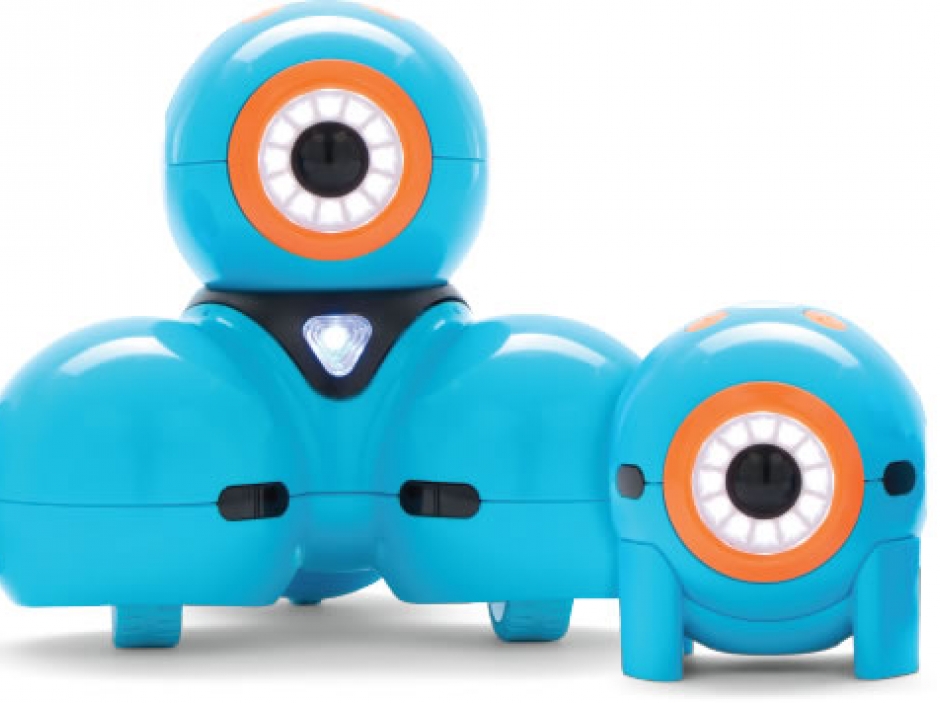For years I've railed against the type of toys and entertainment we give our kids. As a general rule technology seems to have dumbed down play rather than increased creativity. The robots, Dot and Dash, from Wonder Workshop are designed to change all that and they are on the top of my shopping list for elementary school kids this year.
The first thing you're likely to do when you first see and hear Dash power up is smile. I actually let out a bit of a sigh and a giggle. It looks like something that would have come out of the next Pixar movie, and its design, voices and actions are similarly engaging and funny - totally avoiding the saccharine tone of so much children's technology. This robot engages your child without a dash (!) of condescension. It is a companion that is determined to entertain, but needs your child's help to grow.
Let's get the price out of the way first. Not every parent will be able to afford the $200 price tag (and the requirement of an iOS device for programming and remote control operation). On the other hand, the apps are free, and if your child becomes engaged by them, the time spent playing with Dash will be productive, instructive, and enhancing. Consider the cost for any of today's gaming platforms, and factor in the cost of the games you'll need, and Dash looks more and more like a bargain in comparison.
Three sensor studded body is comprised of three motorized "balls" and a round cyclopean eyed head. Straight away, you get to name and customize him through an easy to use app. You can change the colors of the LEDs in his body and around his eye and other changes. (Yes, I have to change from "it" to "him". My Dash instantly became more human than robot to me and I will not refer to Odin, as I named him, as an it!)
The apps are a sort of robotic evolutionary ladder. You start with the most basic which lets you control Dash as an RC vehicle.
At the next level up the child can draw a path on the iOS device and Dash will mimic it in real life. In order to help the user know exactly how far dash will go, the display is set up as a Cartesian grid. Each square represents one body length for Dash. Drag your finger along four boxes and it will move four body lengths forward. You can drag objects onto the path to program Dash to do things when it reaches that point. He might blow his horn, spin around, or say something. There is open ended play here and also a series of directed challenges. This stealthy introduction to programming is so integrated to the fun of playing with Dash, and so full of delightful rewards that it never feels like an "educational" toy in the pejorative, crushingly dull sense of the word. Just the opposite. Dash teaches effortlessly and encourages the child to want to learn more.
What if you want to make Dash do things depending on outside stimuli, like lights or sound; you know, like "if this" then "do that". Another app lets kids teach Dash by dragging visual blocks onto the screen of the iOS device, stacking them in order. "If the sensor sees light" might be one block that a child might drag above another that says "move forward". Of course, this is visual programming. Seeing elementary school kids learning to program, and wanting to program because it is fun and natural, is very exciting and much more important than learning how to mash buttons on a game controller.
There are a number of optional accessories for the system. A xylophone attachment lets Dash play songs (composed by kids or pre-loaded by the designers) robotically by striking notes on a real instrument. Unfortunately, I couldn't teach him to march and play at the same time. My only concern here is that the xylophone makes the robot seem very much like a baby/toddler toy, something that might make older kids feel dismissive about the whole system. Nevertheless, seeing Dash play with precision is pretty amazing.
A clip on cow-catcher can be used to shovel up small toys as Dash moves about a room. Could it clean up after playtime like a toy swallowing Rumba vacuum? Not really, but a parent can dream.
Another snap-on lets Lego's be attached to the Robot. I was not able to test this accessory for this review.
Finally, there is a second robot, Dot. Dot has no motors, so it can't move. However it can be programmed to interact with, and even trigger actions in Dash.
Gresham's law that "bad money drives out good" is often seen at work in the toy business. Corporations looking for the next multi-million dollar opportunity often overlook their responsibility to the children, to the future. Wonder Workshop's notion that kids need to learn twenty-first century skills (and can have fun doing it) flips the industry paradigm on its head, putting kids first and hoping that profits follow. We will all be better off if it succeeds!



